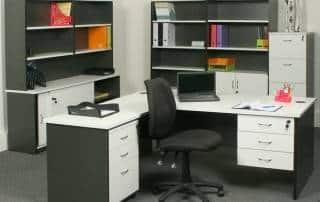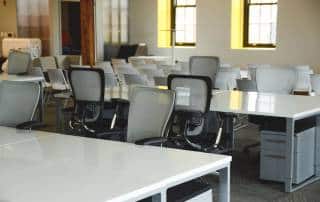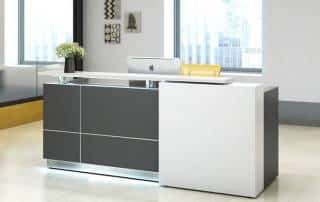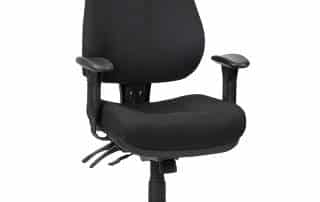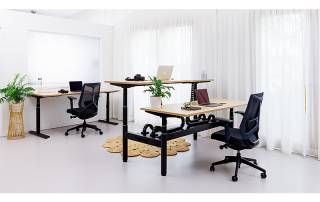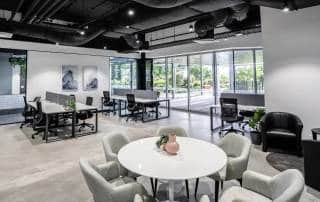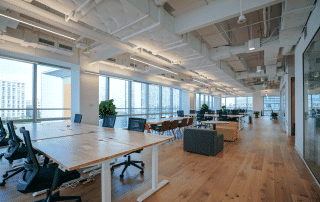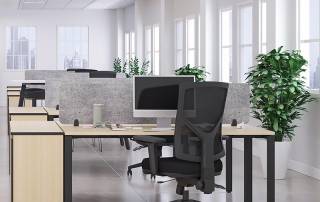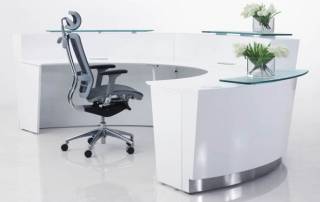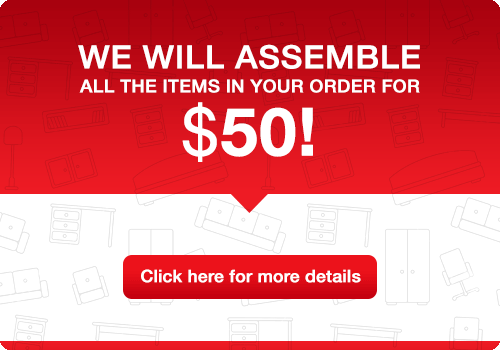Understanding the Impact of Quality Office Furniture on Employee Health and Productivity
Transforming my workspace with ergonomic office furniture improved my health and productivity. Learn how the right choices impact well-being at work.
Office Furniture Solutions for Promoting Team Well-Being and Collaboration
Boosting team well-being is achievable with smart office furniture choices. Optimize productivity, comfort, and style for a healthier work environment today.
Comprehensive Office Reception Area Design Guide & Ideas
Enhance your office's first impression with our comprehensive reception guide. Discover design tips and ideas to create an inviting and professional atmosphere.
Embracing Ergonomics: Advantages of Standing Desks
Experience the advantages of standing desks for enhanced ergonomic health. Learn how they can boost productivity and reduce discomfort in the workplace.
Transform Your Office With Ergonomic Chairs for Back Pain
Transform my workspace with an ergonomic office chair that enhances comfort and productivity. Experience the difference as I work smarter and feel better!
13 Essential Articles on Choosing the Perfect Office Chair in Australia – Insights, Trends, and Expert Recommendations by Fast Office Furniture
Australia, known for its diverse landscapes and bustling cities, is home to a thriving business ecosystem. From the iconic Sydney Opera House to the cultural melting pot of Melbourne, the country's major cities are hubs of innovation and productivity. As more Australians spend long hours at their desks, the importance of a comfortable and supportive office chair cannot be overstated. This comprehensive guide explores various aspects of selecting the ideal office chair across different Australian cities, ensuring that workers from all states including Perth to Brisbane can make informed decisions about their seating choices. 1. Scoring the Best Office Chair Under $100 In Adelaide, the city of churches and stunning parklands, budget-conscious buyers can still find quality seating options. When shopping for office chairs under $100: Prioritize adjustable height features Look for chairs with adequate lumbar support Consider the chair's weight capacity Check for durable materials like reinforced plastic or sturdy fabric Read user reviews for insights on comfort and longevity Remember, while cost is a factor, investing in
The Psychological Effects of Layouts of Office Furniture Melbourne
Table of Contents Open Plan vs. Private Spaces The Power of Ergonomics Biophilic Design Integration Colour Psychology in Furniture Selection Flexibility and Adaptability Social Spaces and Collaboration Areas The Impact on Company Culture Wrapping Up In Melbourne, the bustling business hub, office design plays a crucial role in employee well-being and productivity. Office furniture layout, in particular, can have profound psychological effects on workers. Here is how different furniture arrangements impact the minds and performance of Melbourne's professionals. Open Plan vs. Private Spaces The debate between open-plan offices and more private layouts continues in Melbourne's corporate world. Open plans, characterized by large, shared spaces with minimal partitions, can foster collaboration and communication. However, they may also increase stress levels due to constant exposure and lack of privacy. On the flip side, layouts incorporating more private spaces or cubicles can enhance focus and reduce distractions. Many Melbourne firms now opt for a hybrid approach, blending open areas with secluded spots for concentrated work or confidential discussions. The Power of Ergonomics
The Role of Office Furniture Melbourne in Promoting Work-Life Balance Initiatives
Melbourne has long been recognized as one of the world's most liveable cities, with a strong focus on promoting work-life balance for its residents. As businesses in the Victorian capital continue to evolve their workplace cultures, office furniture plays a crucial yet often overlooked role in supporting these initiatives. Let's explore how the right furniture choices can significantly impact employee well-being and productivity while aligning with Melbourne's commitment to a balanced lifestyle. Ergonomics: The Foundation of Workplace Wellness The physical well-being of employees is at the heart of any work-life balance initiative. Ergonomic office furniture, such as adjustable chairs and sit-stand desks, is essential in preventing musculoskeletal issues that can affect workers both during and after office hours. By investing in high-quality, ergonomic pieces from Fast Office Furniture, Melbourne businesses can demonstrate their commitment to employee health and comfort, reducing absenteeism and boosting overall job satisfaction. Flexible Spaces for Diverse Work Styles Melbourne's progressive work culture embraces flexibility, and office furniture should reflect this ethos. Modular furniture systems allow
Office Furniture Melbourne for Creative Industries: The Best Picks
Melbourne's creative industries are booming, from advertising agencies to design studios and tech startups to multimedia production houses. As these innovative businesses grow and evolve, so do their needs for functional and inspiring office spaces. The right furniture can make all the difference in fostering creativity, collaboration, and productivity. Check out some of the best office furniture picks for Melbourne's creative industries. Flexibility is Key Creative work often requires adaptability, and your office furniture should reflect that. Look for modular solutions that can be easily reconfigured to accommodate different projects, team sizes, or brainstorming sessions. Lightweight, mobile pieces allow quick transitions between individual focus work and group collaborations. Ergonomics Meets Aesthetics Long hours of creative work demand comfortable seating that supports proper posture. However, in creative industries, style is just as important as function. Seek out ergonomic chairs and desks that not only provide excellent support but also make a design statement. Fast Office furniture scene offers a wide range of options that blend comfort with cutting-edge aesthetics. Collaborative
Office Furniture Melbourne and Its Impact on Brand Perception
In Melbourne's competitive business scene, office furniture isn't just functional—it's a powerful brand statement. From the moment someone enters your space, your furnishings shape perceptions of your company's values, success, and innovation. In a city known for style and creativity, the right office design can set you apart, boost employee morale, and leave a lasting impression on clients. Let's see how strategic furniture choices can elevate your brand in Melbourne's discerning market. The Power of First Impressions When clients, partners, or potential employees step into your office, they immediately form opinions based on what they see. Your office furniture speaks volumes about your company's values, attention to detail, and overall professionalism. A well-designed space with quality furniture conveys success, innovation, and a commitment to excellence. Reflecting Melbourne's Business Culture Melbourne is known for its dynamic business environment and creative industries. Your office furniture should reflect this vibrant culture while aligning with your brand identity. Whether you are a tech startup in Richmond or an established financial firm in the

